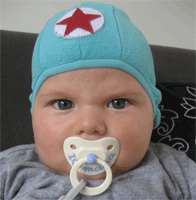Spanking Makes Children Aggressive
 Scientists found spanking one year-olds may make them aggressive by the time they reach three years of age. Although the negative effect of spanking is rather innocent, a new study adds to pile of evidence that spanking may be detrimental to kids. According to Lisa Berlin, the study’s lead author and research scientist at the Center for Child and Family Policy at Duke University, at the age of one year old, children assess parental care and develop a bond. Spanking at that period may affect the processes in negative way and increase aggressiveness of children by the time they reach two years of age.
Scientists found spanking one year-olds may make them aggressive by the time they reach three years of age. Although the negative effect of spanking is rather innocent, a new study adds to pile of evidence that spanking may be detrimental to kids. According to Lisa Berlin, the study’s lead author and research scientist at the Center for Child and Family Policy at Duke University, at the age of one year old, children assess parental care and develop a bond. Spanking at that period may affect the processes in negative way and increase aggressiveness of children by the time they reach two years of age.
Berlin and colleagues studied 2 500 children from white, Mexican-American and African-American low-income families. The study included interviewing parents about their children’s behavior, spanking and the reports from observers who visited the families and observed the relationship between parents and their 1-year, 2- and 3-year old children.
About one-third of mothers of 1-year-olds said they or someone else from the family spanked a child in the previous week, while half of mothers reported punishment of 2-and 3-year olds. Average spanking of 1-year-olds was at 2.6 times a week, 2-year-olds – at 3 times a week.
The study found that children who were spanked as 1-year olds exhibit more aggressive behavior by the time thee reached two years of age and scored worse on cognitive tests. Spanking 2-year-olds, however, didn’t have the same implications. This is probably because they were already more aggressive when parents spanked them.
The researchers also assessed the effect of verbal punishments such as yelling, scolding or disapproving remarks. They found that verbal punishment didn’t have a negative effect if the mother was basically attentive, loving and caring.
It remains unknown how spanking affect cognitive development. One of the theories goes that parents who spank their children are less likely to explain this kind of attitude to their children, which may affect the development of the latter.
Source of the image: flickr.com/photos/martijndevisser.
